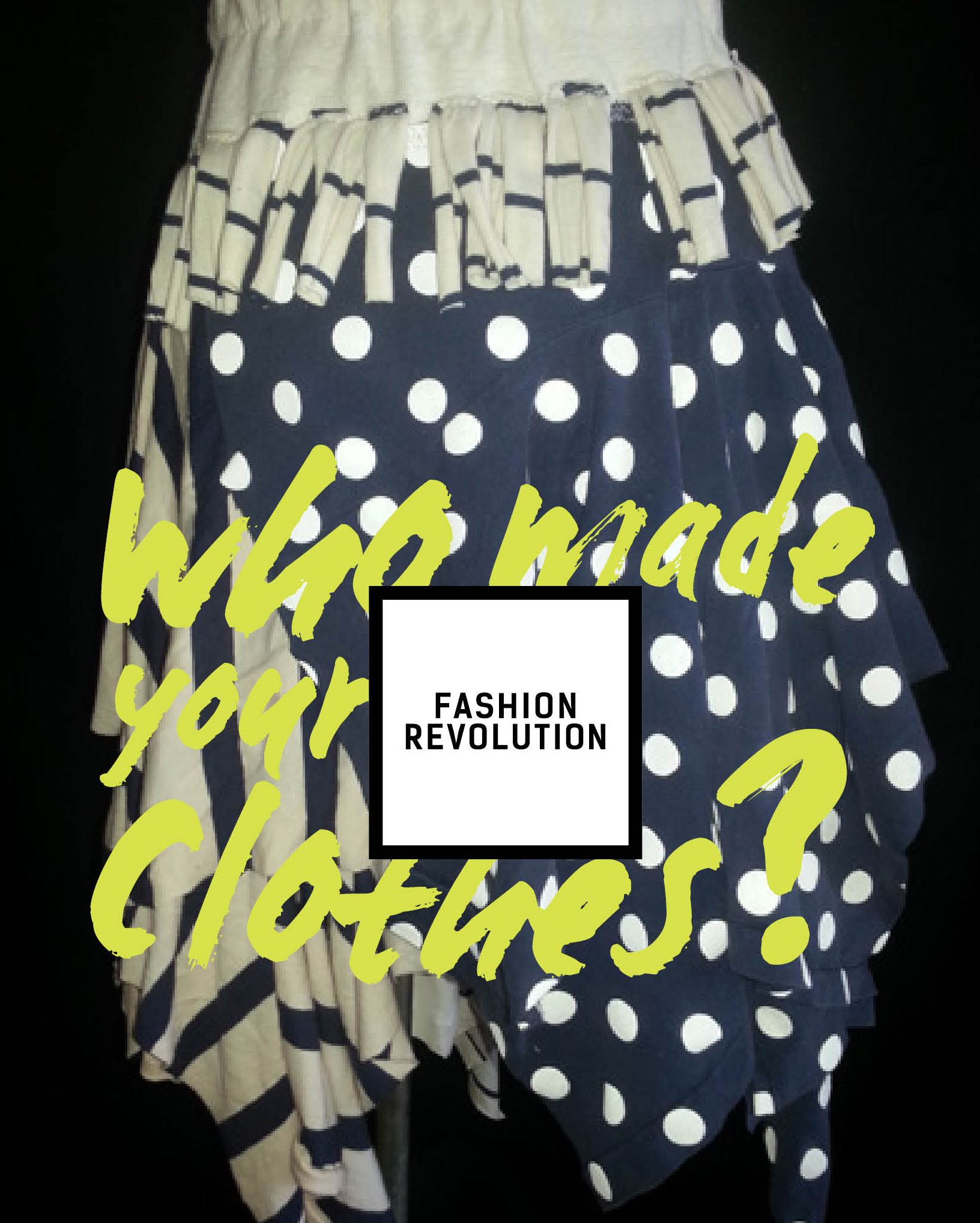 The fabric of society is threads of courage, concepts and good conscience woven with heart. It is Anzac Day in Australia, a day we remember the sacrifice of others so we can live well in a just and free society.
The fabric of society is threads of courage, concepts and good conscience woven with heart. It is Anzac Day in Australia, a day we remember the sacrifice of others so we can live well in a just and free society.
Yesterday a different type of war began. The Fashion Revolution is a battle of conscience to change the culture of clothing consumption which causes injustice, exploitation and waste in the name of looking good.
When you lead from the heart, valuing good and honest endeavours, you live with a clear conscience. This year I stepped into a fairly vacant space, upcycling downunder out of concern for the waste and clothing churn I saw all around me.
This time last year on television, I had watched Bangladesh’s Rana Plaza factory collapse in what was the worst industrial accident for a generation, killing 1133, injuring twice that number, and leaving thousands more destitute. It seemed so wrong – people working in unsafe and desperate conditions, churning out more $5 clothing that not one of us need.
There’s little any individual can do on their own to change things – but yesterday it was amazing to see the Fashion Revolution Day social media storm begin in Australia/New Zealand and gain momentum as it swept around the globe.
So many great words written, photos posted and shared with the #insideout hashtag. The Fashion Revolution movement, founded by Carry Somers in the United Kingdom, connected people in more than 50 countries wanting fashion to become a force for good, one year after Rana Plaza collapsed.
It fell on fertile ground with me, an agricultural scientist and communications consultant with a love of natural fibres and wardrobes bulging with op-shop rescued natural fibre clothing. My Sew it Again upcycling journey began this year as a way of reusing what I already have, showing others what they can do with what they have, and working to shift society’s thinking about the way we engage with our clothes.
Sew 115 is a dress upcycled from a skirt and top that weren’t being worn as they were. The skirt I’d made a while back from cotton/viscose knit fabric which was resewn to the reworked top. The top was op-shop found of cotton/viscose/elastane blend fabric which was quite thick and structured. I cut out the neck and put it aside. I cut off the hem and reattached it as a collar – positioning the collar piece inside the neckline so that it flops forward over the cut neck edge. (Place collar inside neck with both pieces sitting the same way not right sides together. It is hard to show in a photo but easy when you get it sitting the right way. Put one pin in and test how it sits when you bring it to the front.) I trimmed and angled the sleeve length to groove it up a bit, leaving the edge unfinished but putting a few hand stitches in the cut arm-seam so it doesn’t unravel. I removed the elastic from the waist of the skirt and discarded. I then attached the skirt to the top by sewing right sides together. The skirt had a slightly bigger circumference than the top, so I pinned both in quarters (for even spread) and stretched the skirt as I sewed it to the top. The rosemary sprig from our garden is a nod to Anzac Day. Lest we forget.

 I’ve traversed two states in two days, leaving Mt Tabor near Augathella yesterday morning and now at Coolah in southern New South Wales, travelling through grazing, grain and cotton country.
I’ve traversed two states in two days, leaving Mt Tabor near Augathella yesterday morning and now at Coolah in southern New South Wales, travelling through grazing, grain and cotton country.











